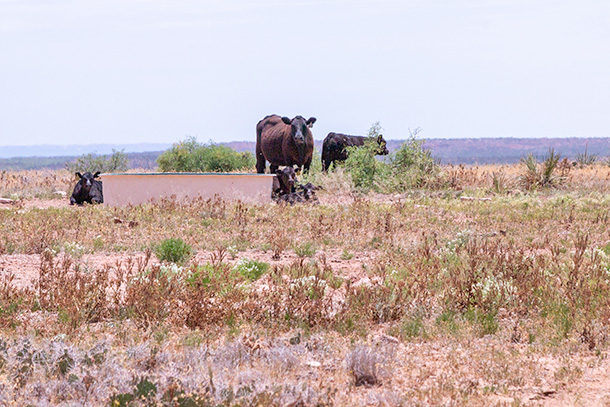In Nebraska, the effects of the drought are prevalent. We have seen no April showers, instead wind and grass fires. These conditions are forecast to persist. So we are going to need to start making our forage plans early. Additionally, we will have to rely more heavily on our irrigated lands. Here are three things to start thinking about when planning where your forage will come from this year.
1. Plant innovative forage mixes
This planting season, consider what species and mixes are going to be the best fit for your operation. When forages are in short supply or expensive, yield should be one consideration when determining what to plant. If your forage mix includes nitrate-accumulating species such as sorghum, sudan or millet to maximize yield, fertilizing based on soil test results will be imperative. To maximize forage use, manage to minimize risk of nitrate accumulation.
Then, of course, nutrient concentrations should be given some thought. This year, feed costs are also high. So, we want our forages to provide more than scratch factor and gut fill. Choose species of forage that will supply protein and energy to avoid the need to purchase costly feed supplements. For example, interseeding grass species into alfalfa stands would be a good option to increase yield and maintain higher protein levels.
Another option is to plant versatile forages and make management decisions later depending on if we get moisture. Small-grain forages such as oats and wheat have versatility. These species could be planted and grazed to allow dryland pastures to rest. Alternatively, they can be hayed or put up for silage later in the year.
Finally, get creative and step outside of what’s been done for the past 20 years. I have seen producers grow vining cowpeas in their corn silage stands to boost protein. Don’t be afraid to work with your extension agents and seed dealers to try something to improve forage nutritive values.
2. Graze crop residues
It might seem a little early to be thinking of grazing crop residues. Even in central Nebraska where it is common practice, I still hear farmers with hesitancy due to possible compaction issues. But, if you have neighbors with crops but not cattle, start having those conversations early. Budget for the additional infrastructure that will be needed to make use of this valuable forage resource. Furthermore, if we are low on hay this fall, you will be happy to have started to plan for more cropland to graze.
3. Graze cover crops
Plan to get your cover crops seeded in late summer to early fall. Get some moisture on them. If you have a pivot, turn it on. The extra moisture during the warm days will help the cover crop establish. Cover crops can be grazed through the winter, windrowed and grazed, or baled and fed out as hay. Traditional grazing will have the soil health benefits of no nutrients being removed and the bottom portions of the plants potentially getting trampled into the soil, depending on the intensity of the grazing system. Windrow grazing will have similar benefits. However, the forage is also preserved better as a windrow. The windrow protects the forage from the elements more than free-standing forage, so there is less loss of soluble nutrients.
Most cover-crop mixes include brassicas, high-yielding forage like sorghum or millet, and legume species like cowpeas. Therefore, they typically provide a lot of mass and a high plane of nutrition to livestock. Remember to use caution when grazing potential nitrate-accumulating species and always be on the lookout for sulfur toxicity and magnesium deficiencies when grazing cover crops.
In conclusion, livestock producers will have some difficult obstacles to overcome with the drought and high feed prices we are seeing this year. Hopefully, planning ahead to make use of some unconventional forage sources can help keep production performance high without requiring too many sacrifices.









